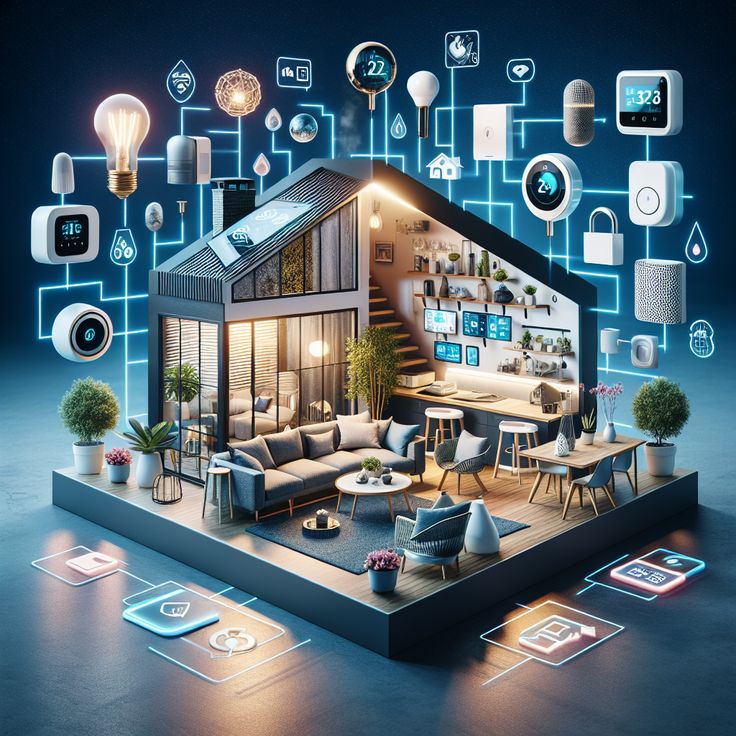Introduction: The Future of Living - What is a Smart Home?
Start with a brief introduction to smart homes. Explain that a smart home refers to a residence equipped with technology that allows for the remote or automated control of systems and devices, like lighting, heating, cooling, security, and entertainment.
Image Idea: A futuristic home with glowing smart devices (e.g., lights, security cameras, smart speakers).
Key Components of a Smart Home
◈ Smart Lighting:
Discuss smart bulbs, switches, and lighting systems that allow users to control lighting via voice, apps, or automation.
Features: Dim, color change, schedules, and remote control.
Benefits: Energy efficiency, convenience, and enhanced mood setting.
◈ Smart Thermostats Introduce devices like Nest, Ecobee, or Honeywell that learn user preferences and adjust temperature settings automatically.
Benefits: Energy savings, remote temperature control, scheduling, and comfort.
◈ Smart Security Systems Explain smart security cameras, doorbells, motion sensors, and alarm systems that provide real-time monitoring and alerts.
Popular devices: Ring, Arlo, and Google Nest cameras.
Benefits: Enhanced safety, peace of mind, and remote surveillance.
◈ Smart Appliances Smart refrigerators, washing machines, ovens, and vacuums that can be monitored or controlled remotely.
Benefits: Convenience, energy efficiency, and automation.


How Smart Homes Improve Everyday Life
◈ Convenience and Efficiency Smart homes offer ease of use with voice commands (Amazon Alexa, Google Assistant) and automation that frees up time for other activities.
Example: Automating lights to turn on when you arrive home or setting up a coffee maker to brew at the same time every morning.
◈ Energy Savings By automating lights, thermostats, and appliances, smart homes can help reduce energy consumption, leading to lower utility bills.
◈ Enhanced Security and Peace of Mind With the integration of cameras, motion sensors, and alarms, smart security systems help protect against break-ins and other threats.
Popular Smart Home Devices to Consider
◈ Smart Speakers and Voice Assistants These devices serve as the hub of a smart home, allowing users to control other devices using voice commands.
Examples: Amazon Echo, Google Home, Apple HomePod.
◈ Smart Plugs and Outlets These devices allow users to turn ordinary appliances into smart devices, controlling them remotely through an app.
◈ Smart Blinds and Curtains Automated window coverings that can open and close based on time of day or ambient light levels.


The Benefits of a Fully Integrated Smart Home
◈ Discuss the convenience, energy savings, and control that come with integrating multiple smart devices in a home. For example, you can link your thermostat, lights, and security system to work together, creating an optimized home environment.
Smart Home Setup – How to Get Started
◈ Offer advice on setting up a smart home, focusing on simple, budget-friendly steps for beginners: Start with a voice assistant (Amazon Echo, Google Nest). Add a smart bulb or smart plug. Expand with a smart thermostat and security camera. Provide tips on setting up each device and troubleshooting common issues.

Conclusion: Embracing the Smart Home Revolution
Wrap up the blog by encouraging readers to start small, experimenting with different devices to find what works best for their lifestyle. Mention the continuous innovation in smart home technology, making it easier to integrate new devices over time.



